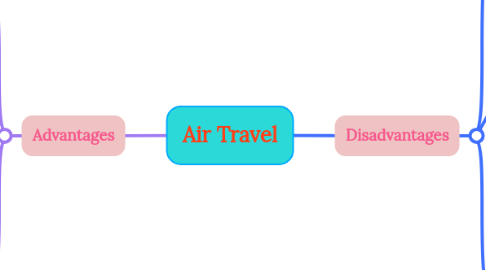
1. Advantages
1.1. its speed
1.1.1. Air transport is unbeatable when it comes to speed. Passengers can traverse continents in a matter of hours, and goods can be delivered to international destinations in a fraction of the time it would take by sea or land.
1.2. its accessibility
1.2.1. Air transport links the world, connecting cities and countries across the globe. It facilitates international trade, tourism, and cultural exchange, making the world a smaller and more interconnected place.
1.3. its reliability
1.3.1. Air travel is considered one of the safest modes. Stringent regulations, rigorous training for pilots and crew, and advanced technology contribute to a high level of safety for passengers and cargo.
2. Disadvantages
2.1. cost
2.1.1. Airline tickets, especially for long-haul flights, can be expensive. The high operational expenses associated with aircraft maintenance, fuel, and security measures are passed on to passengers and shippers.
2.2. environmental concerns
2.2.1. The environmental impact of air travel, particularly in terms of carbon emissions, is a concern. Aircraft emit greenhouse gases, contributing to climate change. Efforts are being made to develop more fuel-efficient and eco-friendly aircraft, but this remains a challenge.
2.3. weather dependence
2.3.1. Air transport is highly weather-dependent. Adverse weather conditions, such as storms, fog, or volcanic eruptions, can lead to flight delays and cancellations. Passengers and shippers must be prepared for these disruptions.
